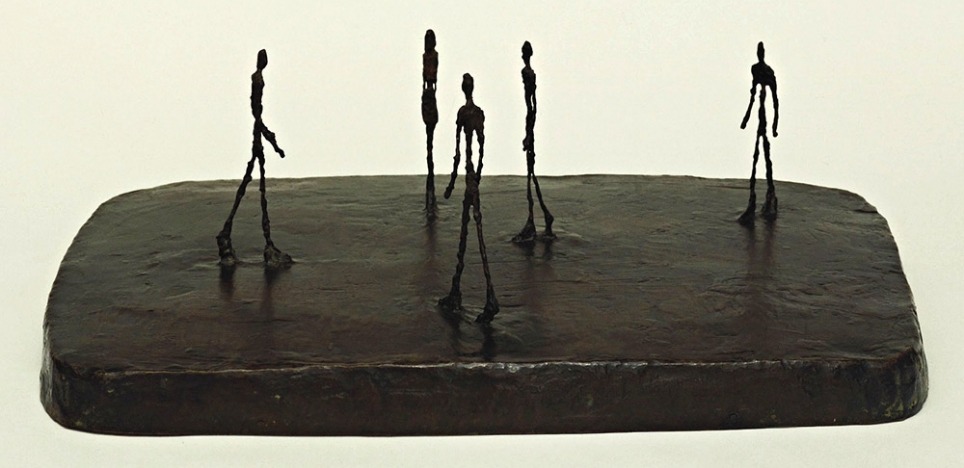See more about the piece here.
Alberto Giacometti (1901-1966) was a Swiss sculptor raised in a family where art was the central focus of life. He created his first painting in 1913 when he was 12 and his first sculpture in 1914. Giacometti commented on his early art: "It all came so easily, it was paradise."
During the 1920s, Giacometti went to Paris and settled into a small Montparnasse studio where he would work for the rest of his life. In the 1930s he aligned himself briefly with the Surrealist movement but opted instead to go his own way.
During World War II, this Swiss artist returned home and worked on a group of special bronze sculpture pieces. These stick men and women were individuals passing each other or standing still like trees. Giacometti's works were championed by Jean-Paul Sartre as meditations on the Existential predicament of alienation and loneliness. Others saw these sad looking figures as the thin and battered survivors of the death and destruction of World War II. Here is the primal and resilient human body still moving after years of chaos and meaninglessness.
City Square was created by Giacometti in 1948. It shows five thin figures — four men and a woman. These emaciated individuals are in close proximity but appear unable or unwilling to connect with each another. Through these sculptures, Giacometti depicts the universal feelings of what it's like to be alive in a world of isolation and separation. While some art critics have spoken of this sculpture piece as one of cynicism, we prefer to see these five as vulnerable souls who bear witness to the indestructibility of the human spirit — even at the edge of the void.
